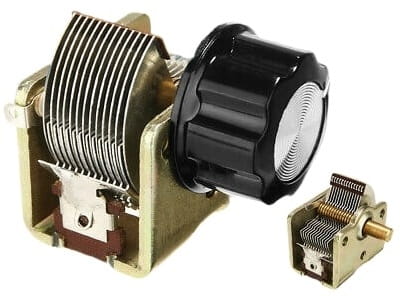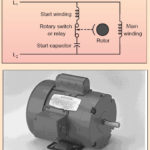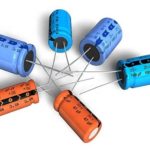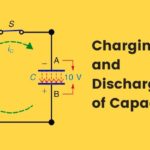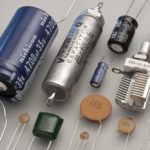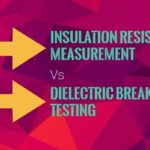Did you wonder how charge get stored in a dielectric material. Is it really possible?
Yes, it is possible for dielectric materials such as air or paper to hold an electric charge. This is because free electrons cannot flow through an insulator. However, the charge must be applied by some source.
I know you didn’t understand the above statement.
Don’t worry.
By the end of this article, you will clearly understand how electric charge is stored in a dielectric.
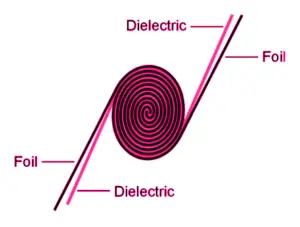
In the figure below the battery can charge the capacitor shown. The capacitor have two metal plates A and B. The dielectric is placed between the metal plates or foil. Now I will explain this basic electrical engineering concept on how the charge from the battery is stored in the dielectric of capacitor.
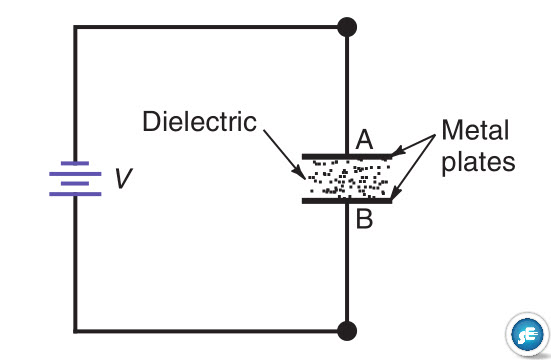
With the dielectric contacting the two conductors connected to the potential difference V , electrons from the voltage source accumulate on the side of the capacitor connected to the negative terminal of V . The opposite side of the capacitor connected to the positive terminal of V loses electrons.
As a result, the excess of electrons produces a negative charge on one side of the capacitor, and the opposite side has a positive charge.
As an example, if 6.25 * 1018 electrons are accumulated, the negative charge equals 1 coulomb (C).
The charge on only one plate need be considered because the number of electrons accumulated on one plate is exactly the same as the number taken from the opposite plate.
What the voltage source does is simply redistribute some electrons from one side of the capacitor to the other. This process is called charging the capacitor.
Charging continues until the potential difference across the capacitor is equal to the applied voltage. Without any series resistance, the charging is instantaneous. Practically, however, there is always some series resistance.
This charging current is transient, or temporary; it flows only until the capacitor is charged to the applied voltage. Then there is no current in the circuit.
The result is a device for storing charge in the dielectric. Storage means that the charge remains even after the voltage source is disconnected. The measure of how much charge can be stored is the capacitance C .
More charge stored for a given amount of applied voltage means more capacitance. Components made to provide a specified amount of capacitance are called capacitors, or by their old name condensers.
In the automotive industry capacitors are commonly referred to as condensers. In the electronics industry, however, capacitors are rarely, if ever, referred to as condensers.
Electrically, then, capacitance is the ability to store charge. A capacitor consists simply of two conductors separated by an insulator.
For example, figure below shows a variable capacitor using air for the dielectric between the metal plates.
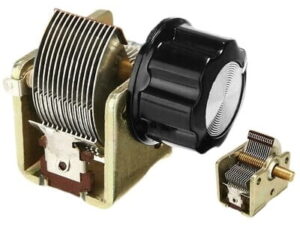
There are many types of capacitors with different dielectric materials, including paper, mica, and ceramics, but the schematic symbols shown apply to all capacitors.
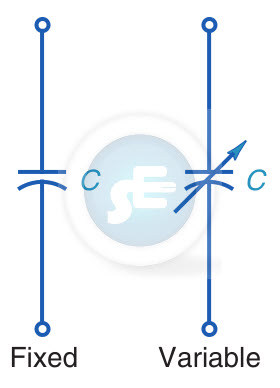
Read more about different types of capacitors and their uses.
Electric Field in the Dielectric
Any voltage has a field of electric lines of force between the opposite electric charges. The electric field corresponds to the magnetic lines of force of the magnetic field associated with electric current.
What a capacitor does is concentrate the electric field in the dielectric between the plates. This concentration corresponds to a magnetic field concentrated in the turns of a coil.
The only function of the capacitor plates and wire conductors is to connect the voltage source V across the dielectric. Then the electric field is concentrated in the capacitor, instead of being spread out in all directions.
Electrostatic Induction
The capacitor has opposite charges because of electrostatic induction by the electric field.
Electrons that accumulate on the negative side of the capacitor provide electric lines of force that repel electrons from the opposite side.
When this side loses electrons, it becomes positively charged. The opposite charges induced by an electric field correspond to the opposite poles induced in magnetic materials by a magnetic field.
